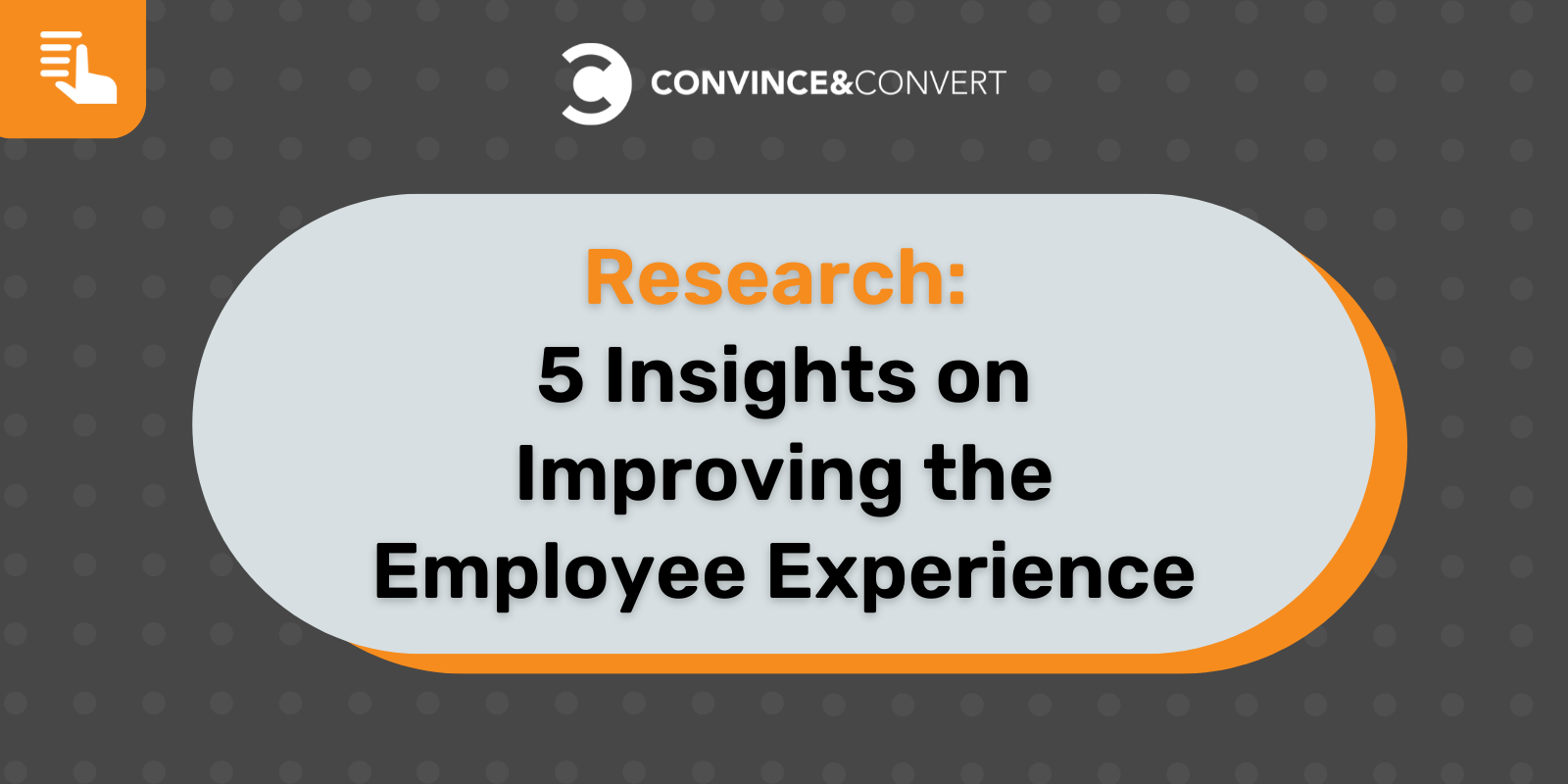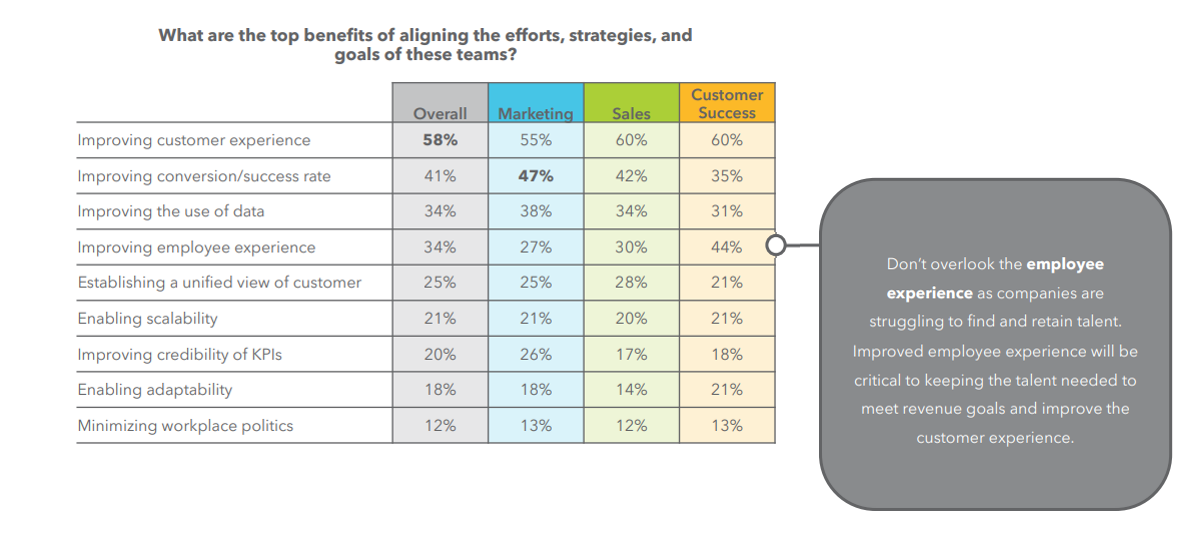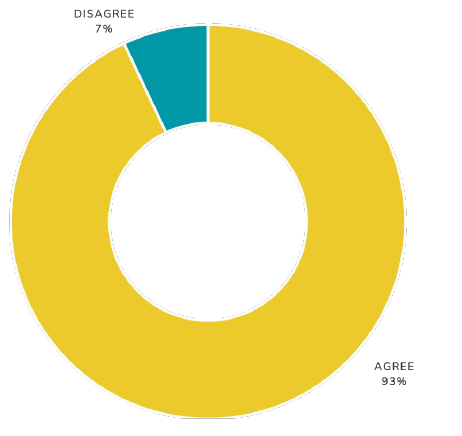
A top priority for marketing professionals is analyzing and improving the customer experience. We talk to customers, pour over the data, build the necessary technology stack, use customer journey mapping, build feedback loops, and more.
But what about improving the employee experience?
Improving the employee experience involves all departments and leaders in an organization. Marketing, HR, finance, operations, sales, customer success, the C-suite, and more are part of the strategic challenge of improving the employee experience.
In recent months, Ascend2 and our research partners have performed various studies that have revealed helpful data on the state of the employee experience and how to improve that experience. Here are 5 key findings.
Finding 1: Employee Experience Matters
Time is Ltd and Ascend2 conducted a study to determine the state of the employee experience and its impact on the evolving workforce. In the report, HR leaders overwhelmingly recognize that employee experience and well-being drive productivity, effective collaboration, and more.
Employee experience matters. Nearly all (94%) of HR leaders surveyed consider employees’ experience at their organization to be important, with over two-thirds reporting that it is extremely important.
And here is an important reason why it matters. Poor employee experience is leading to high turnover. Turnover rates are up, and a majority of HR leaders think that trend will continue. Over 75% of respondents experienced an increase in turnover in the past year, and nearly one-third report a current turnover rate of 16% or higher.

Finding 2: Connection Between Employee Experience and Alignment
An important aspect of improving the employee experience is the alignment of departments. In the research study, The RevOp Difference, by the Pedowitz Group, the alignment of marketing, sales, and customer success departments was analyzed to determine the top benefits of alignment.
The research highlighted that companies should not overlook the benefit of an improved employee experience when striving to align teams. As companies struggle to find and retain talent, improved employee experience will be critical to keeping the talent needed to meet revenue goals and other key goals.

When teams are aligned, it allows organizations to:
- Achieve organizational unity
- Effectively use resources
- Understand and meet goals
- Be more agile in making adjustments to plans
- Improve planning
- Reduce frustration
- Improve overall efficiency
48% of marketing, sales, and customer success teams that are fully aligned far exceed their revenue goals, significantly more than those that are not fully aligned. When teams are successful, that dramatically improves employee satisfaction and experience – and as a result, revenue and growth is positively impacted.
Finding 3: Employee Experience Starts at the Top
72% of executives feel strongly that their current workplace dynamics (meeting culture, work environment, etc.) are sustainable for the next three to five years…
BUT only 42% of those in non-executive roles — managers, directors, and VPs — feel the same.
That’s a significant disparity in perception of what’s sustainable. So how can executives get a clear picture of the true employee experience to better align goals to the needs of their workforce?
- Accurately gauging meeting efficiency should be a top priority. 46% of HR execs say meeting culture is a top challenge in the workplace, but only 33% say they struggle to measure meeting efficiency.
- Taking control of collaboration tools is critical to success. 77% of execs strongly agree that the pandemic has made tools that support effective communication more essential, but 61% also find that managing this technology is a top challenge.
- Retention starts with onboarding. 88% of execs report a higher turnover in the last year, but only 41% say that a top objective for improving the employee experience in the year ahead will be improving recruitment and onboarding.
Finding 4: Insights Into the Employee Experience Will Be Critical to Success
With more remote work, the influx of technology that keeps us connected all the time, and a culture that has accepted instant gratification as the norm, it is no surprise that 37% of HR executives saw a significant decline in employee productivity during the pandemic.
If team leaders were given the means to discover the nature and scope of this problem, would this help improve productivity? A whopping 93% of survey respondents say “yes.”
93% of HR leaders agree that providing data-backed insights on collaboration and communication would help managers improve productivity.

Which areas are most difficult to measure when it comes to the employee experience?
- Employee satisfaction: 45%
- Employee productivity: 41%
- Meeting efficiency: 38%
- Employee engagement: 37%
Finding 5: Red Flags Regarding the Future
HR leaders recognize that employee experience and well-being drive productivity, collaboration, and more. However, the majority still fall back on antiquated HR objectives like improving employee satisfaction and company culture.
There are major red flags in HR leaders’ responses when asked how they will improve employee experience in the coming year.
- Red Flag #1: With turnover rates expected to rise, it may be a red flag that only 32% of HR leaders are focused on recruitment and onboarding processes as a top objective for improving employee experience in the year ahead.
- Red Flag #2: Less than one-quarter (24%) of those surveyed report improving employee engagement is a top priority for improving the employee experience in the year ahead.
- Reg Flag #3: Improving employee satisfaction is the top objective for improving employee experience. But, employees expect more concrete solutions and are resigning at a much higher rate.
Conclusion
Improving employee experience is a collaborative effort, filled with challenges. But the benefits to your organization when you make a difference are felt throughout the organization. Your marketing improves. Revenue grows. Frustration is minimized. Turnover decreases. The benefits are many and long-lasting. Take time now to prioritize improving your employee experience in the year ahead – you will not be disappointed in the results.

